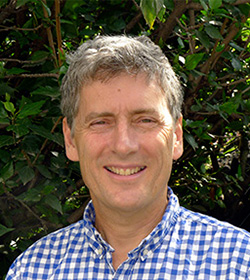Abstract
Plant architecture is at once both distinctive and extremely variable. Both attributes stem from the simple structure but complex environmental control of plant architecture. In the grasses, the ability to produce tillers (basal branches that can be semiautonomous from the main culm) has given them the ability to finely tune plant response to environment. In this talk, I will concentrate on some of the quantitative genetic results we have obtained for control of branching and height in Setaria, as well as discuss the evolution of genetics underlying flowering.
Speaker Bio
Dr. Andrew Doust is Professor and Head in the Department of Plant Biology, Ecology, and Evolution at Oklahoma State University. Trained as a systematist, he first worked at the National Herbarium of NSW, in the Royal Botanic Gardens, Sydney, Australia, before a Ph.D. at the University of Melbourne on floral developmental patterning in basal angiosperms. After postdocs at the University of Missouri-St. Louis and University of Florida, Gainesville, he moved to Oklahoma State, where he has been most involved with analyzing the evolutionary genetics of morphological change in grasses. In particular, he has specialized in the C4 model grass system Setaria, focusing on key traits of plant architecture, flowering time, and seed shattering.
